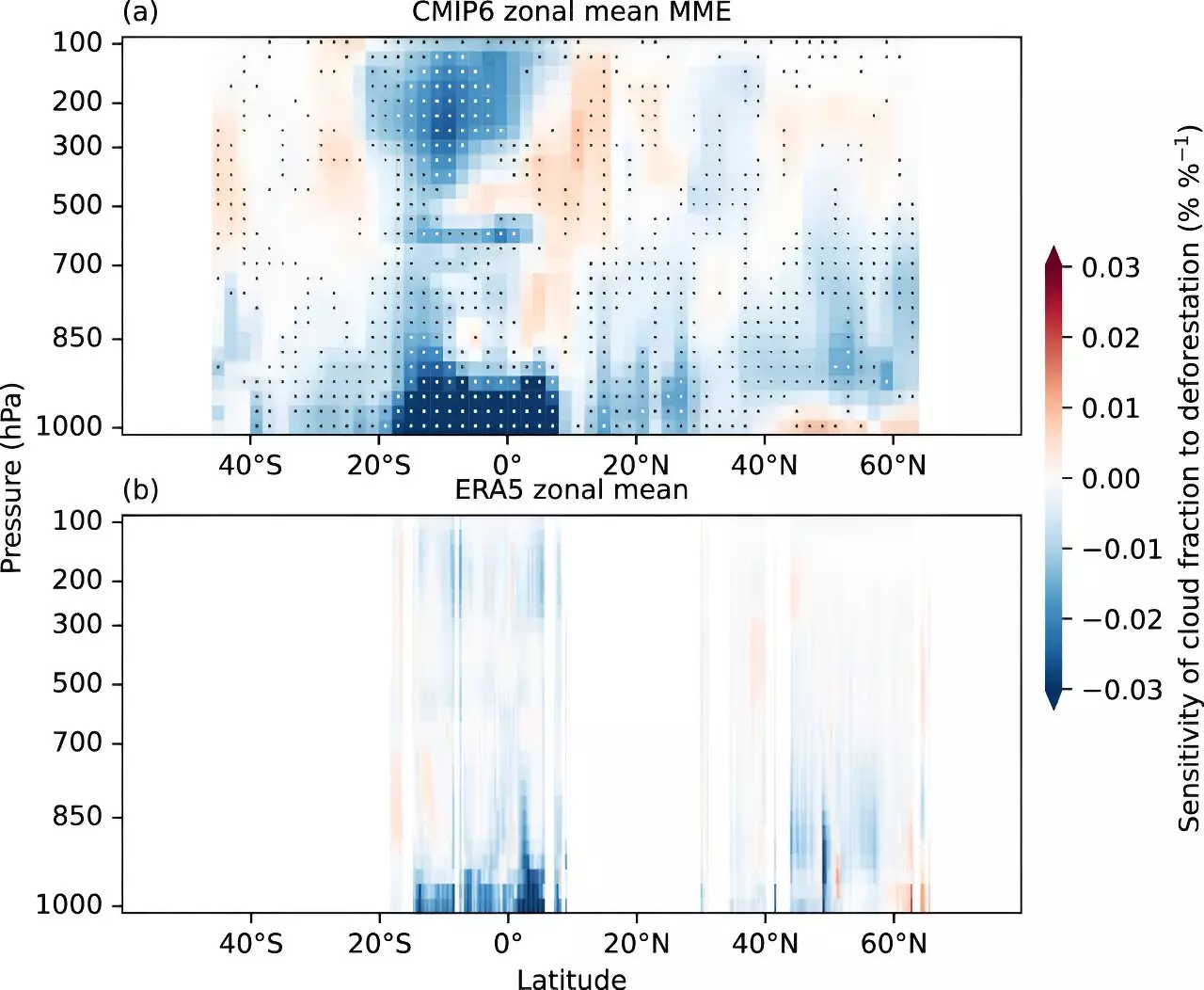Recent research conducted by collaborators from iDiv, Leipzig University, and Sun Yat-sen University has unveiled significant insights into the consequences of deforestation on climate dynamics. This research has challenged existing notions by identifying how the removal of forests not only contributes to increased carbon emissions but also has the potential to enhance global warming more than previously recognized. The intricate relationship between deforestation and atmospheric conditions sheds light on a less-discussed aspect of climate change: changes in cloud cover.
Understanding Cloud Dynamics Post-Deforestation
The researchers utilized sophisticated climate models and observational data to analyze deforestation’s impact on cloud formation, revealing that the act of clearing forests leads to a substantial decline in both low-level and high-level clouds. Dr. Hao Luo, the lead author of the study, has pointed out that this decrease in cloud coverage can almost eliminate the cooling effect forests typically provide. Low-level clouds play a pivotal role in climate regulation as they reflect sunlight and thus help maintain cooler temperatures. The loss of these clouds can aggravate warming trends, contrary to the assumed benefits of a darker soil surface that would normally absorb more sunlight.
Further exploration into the mechanics behind cloud formation reveals that there are critical alterations in the surface turbulent heat flux once forests are cleared. Professor Johannes Quaas notes that this disruption diminishes the uplift and moisture that are essential for cloud development. When forests exist, they contribute to nurturing a particular balance of heat and moisture—in their absence, there is a shift in local meteorological patterns that inhibits cloud formation. This newly recognized relationship is pivotal for understanding the direct consequences of land use changes on climate systems.
The implications of this research extend beyond the immediate discourse on carbon emissions; they introduce a compelling narrative about the broader ecological impacts of forest biodiversity. As biodiversity influences cloud formation and local climates, there is an urgent need to re-evaluate conservation strategies that not only consider carbon sequestration but also the intricate benefits that diverse forest ecosystems provide to weather patterns. The gap in our understanding of these interactions presents a pressing challenge that environmental scientists and policymakers must confront.
The findings published in Nature Communications emphasize that the interplay between deforestation and climate change is multifaceted. It brings to light the significance of minor atmospheric elements like cloud cover that can either mitigate or exacerbate climate warming effects. Every effort must be taken to protect forests, not only to combat carbon emissions but also to preserve the vital cloud formation processes that regulate our planet’s climate. This study acts as a clarion call for action—highlighting the need for more informed strategies in forest conservation and land use policy to effectively address the global climate crisis.


Leave a Reply